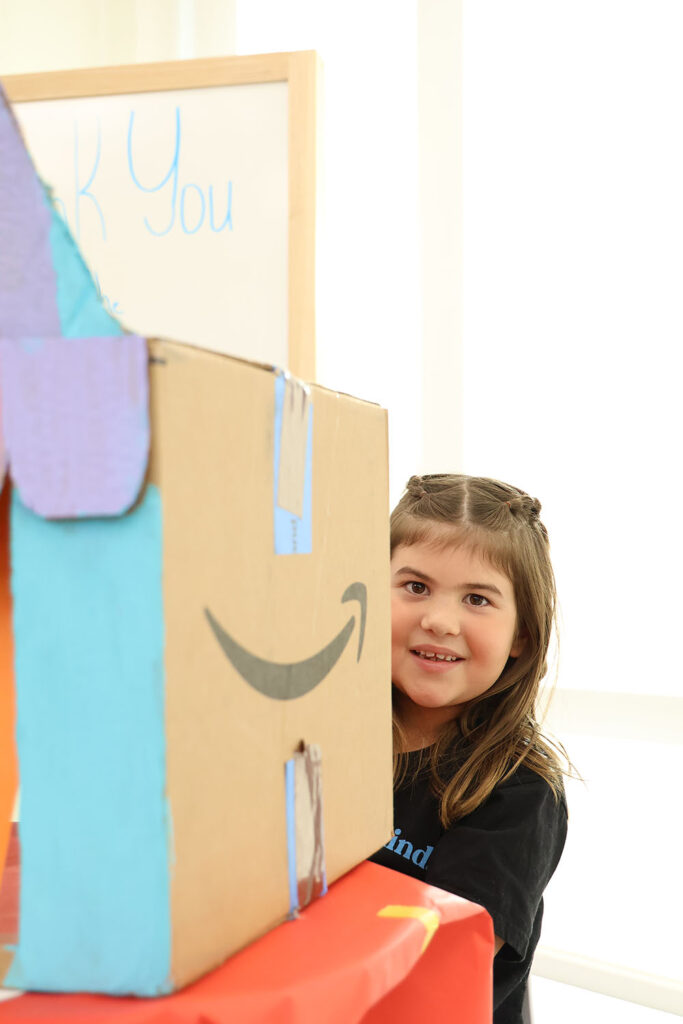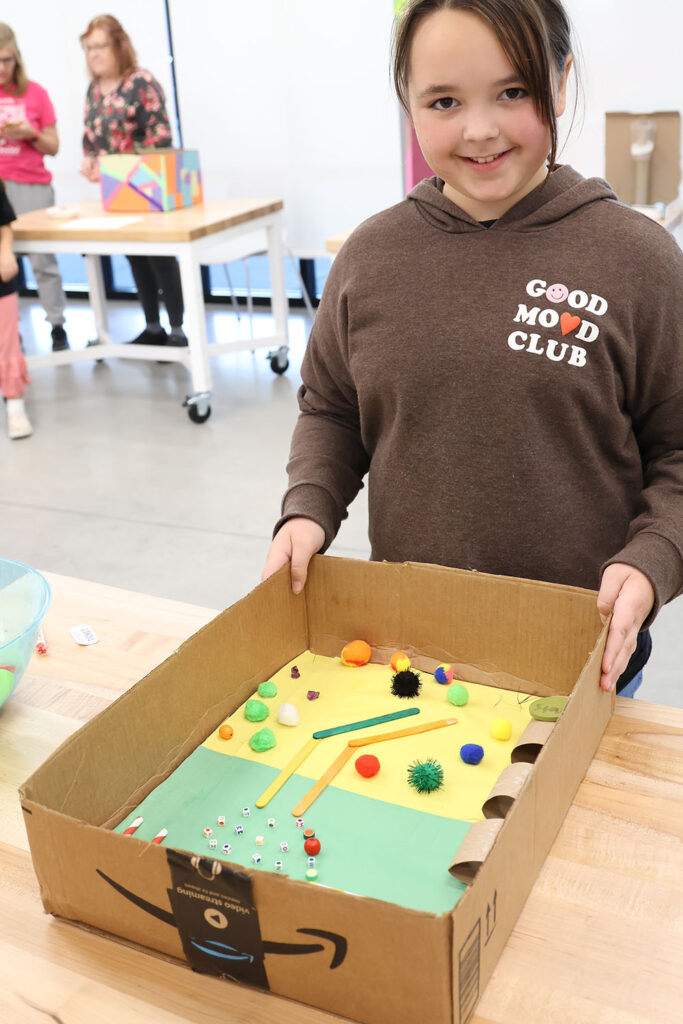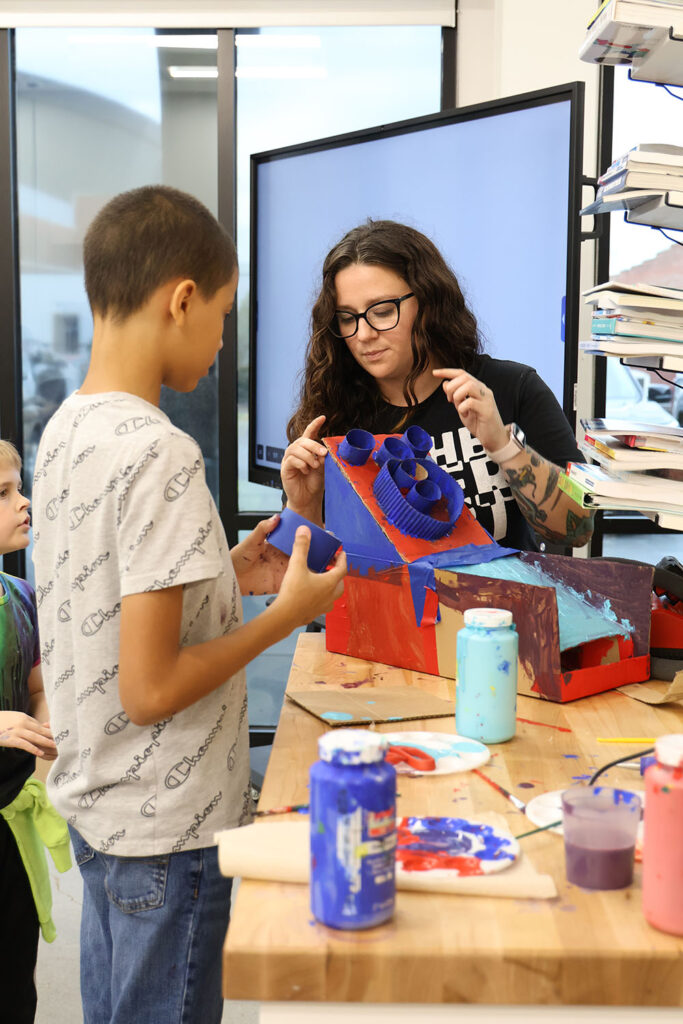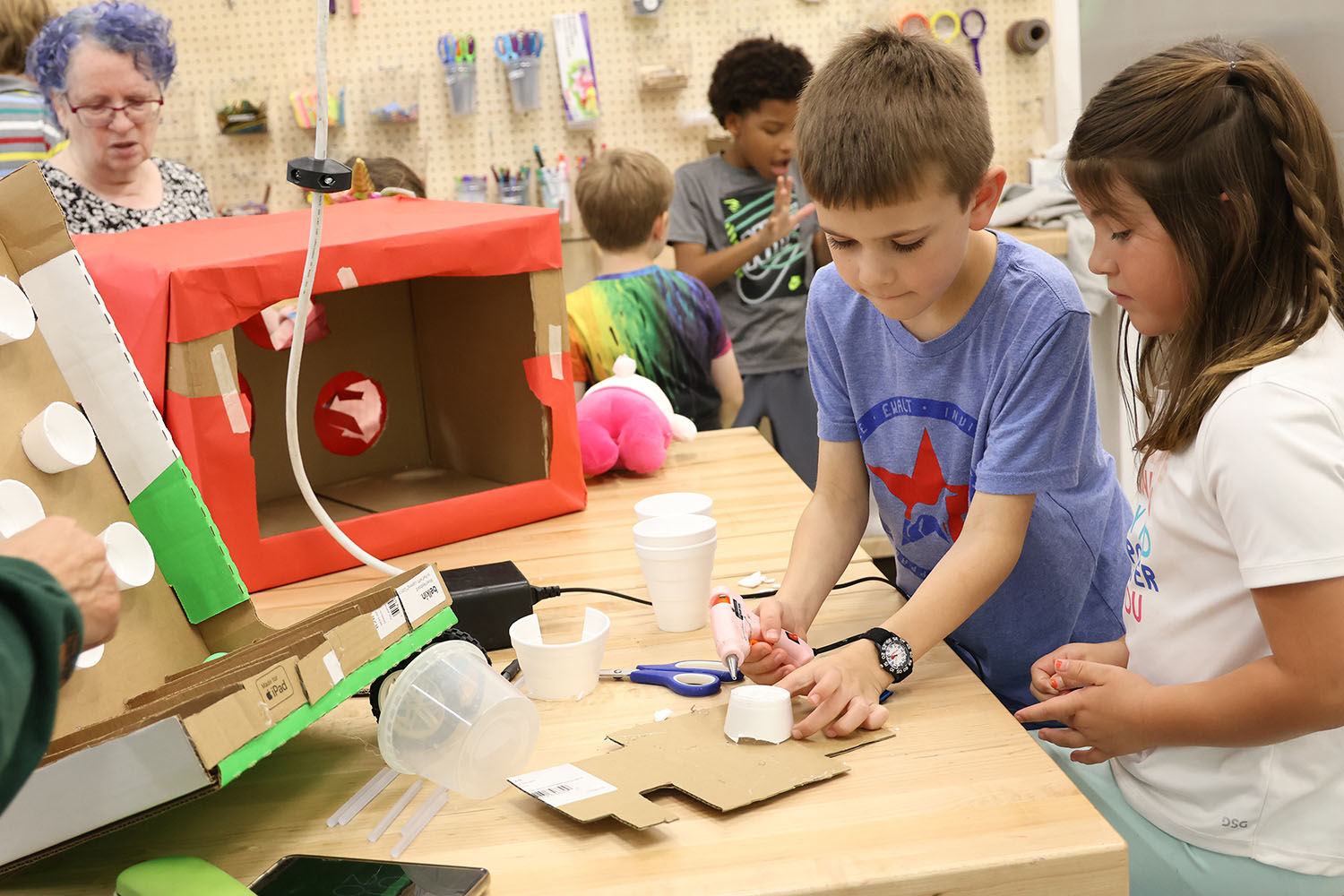By Lauren Watkins

It all started when 7-year-old Brynlee, who attends Wichita Public Schools’ Creative Minds microschool inside Learning Lab Wichita, decided she wanted to raise funds to help members of her community.
“I wanted to help the city and help the houseless,” she said.
Brynlee’s family works in the construction industry, so she decided the best way to help the houseless would be to give an individual or a family a house.
Brynlee came up with the idea of hosting a Cardboard Carnival, and her classmates agreed to help her. The K-sixth grade students created carnival games using cardboard and other craft materials, and the kids charged $1 for each game played. They marketed the event to the downtown Wichita area, and people came to Learning Lab Wichita to support it.
Olivia Sumner, the students’ teacher, explained that the impetus for the project occurred as part of the class’s quarterly project.
“The original idea was to have the students come up with ideas that they could do at home,” she said. “That was a stepping stone in our culture and community service unit, so when Brynlee came up with this giant, awesome idea, it was exciting and scary. In no way was I going to stop that passion because I really want the kids to be changemakers.”
Prior to the carnival, students learned more about Wichita’s houseless situation from Cole Schneiders, who works at United Way of the Plains. They began to understand that they needed to find a location for their tiny home, so they began researching.
They also began building, and students created more than 20 games for the carnival.
“Even some other students from the other school models at Learning Lab Wichita participated by building games for the carnival,” Sumner said.

The Cardboard Carnival was an example of a student-led project. It allowed the space for students to be creative and collaborative and produce what they wanted to make. Vaylee, another learner at Creative Minds, said she enjoyed the experience.
“I came up with my own game,” she said. “It was like bowling, but instead of pins falling, you had to get your pins into a large and a small hole.”
Brynlee’s game was the performance of a puppet show for everyone passing through the carnival. Creative Minds student Eric, who created a golf game, said the Cardboard Carnival was inspiring, and he was grateful for the experience.
“This means a lot to me,” he said, “and I wish I could do it more often.”
On the day of the Cardboard Carnival, the students raised more than $1,000 toward their goal, but they still had quite a way to go. Fortunately, a local broadcast station learned about the carnival and came to Learning Lab Wichita to do a news story. Soon, word spread about a group of kids who wanted to help others.
The students were surprised and thrilled when a local donor approached them and offered to provide enough funding for, not one, but three tiny homes. With the help of the nonprofit Stand Together, the group found a location to build all three homes together.
“I feel like if you have a dream, you should follow it and not just give it up,” Brynlee said.

Sumner said she has observed that her students want to be involved in making a difference.
“It is so inspiring to see all the kids rally together,” she said. “That is the purpose of this class; to make learning relevant so that the kids will want to change the community and see the power that they have.”
Creative Minds shares Learning Lab Wichita’s focus on personalized and student-driven education. The adults are available to students to facilitate and support their learning ideas.
“Our students’ ability to communicate and reach out to others and knowing how to advocate for themselves and the needy in our community speaks to not only the way we’ve built this school, but also to the entire Learning Lab model, that students really take charge of their learning,” Sumner said. “We need to trust kids that they know what they need, and we need to be better supporters at that.”
Giving the learners creative space in which to explore ways they can help the community can make learning meaningful to the students.
“We empower our kids,” Sumner said.

